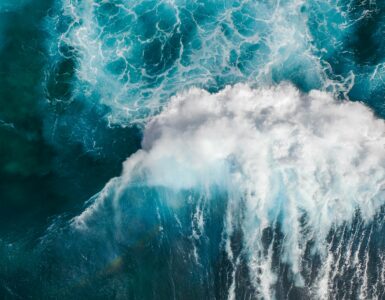Introduction
For generations, maps have been a crucial tool for comprehending and navigating the globe. Maps have developed and modified over time to fulfill user demands, from primitive drawings made by ancient civilizations to current technologies like GPS. In this article, we will cover the fundamentals of maps and mapping techniques, along with how to use them to comprehend and navigate our world.
Types of Maps
There are numerous varieties of maps, each with a distinct function. Several popular map types include:
- Political maps: These maps display the physical features and borders of countries, states, and other political entities.
- Physical maps: These depict the terrain’s natural features, such as mountains, rivers, and waterways.
- Topographic maps: These depict both natural and artificial elements, such as elevations and contours, in a given area. They are frequently employed for outdoor pursuits like mountain climbing and trekking.
- Climate maps: These maps depict an area’s typical annual temperature, annual precipitation totals, and other meteorological information.
- Population maps: These maps depict the population’s distribution and density.
- Thematic maps: These maps concentrate on a particular theme or issue, like the vegetation, natural resources, or economic activities.
Map Symbols and Scale
Different features and landforms are represented on maps using symbols. Although these symbols can differ from one map to the next, they are typically standardized to make them simpler to interpret. In order to correctly interpret the information that a given map is attempting to portray, it is crucial to get familiar with the symbols that are being utilized.
Scale, which is a ratio comparing an object’s size on the map to its actual size, is another feature of maps. There are several methods to express the scale, including as a fraction or a bar scale. To precisely calculate distances and plot routes, it’s critical to comprehend the scale of a map.
Reading and Interpreting Maps
Understanding and navigating the world around us requires the ability to read and comprehend maps. The following advice will help you make the most of a map:
- Pay close attention to the title and legend because they provide crucial details about the map’s meaning, symbols, and scale.
- Search for patterns and relationships: Maps can highlight linkages and patterns that aren’t always visible in the real world. An area may be shown on a map to have a higher concentration of one type of land cover than another, such as forests or agricultural land.
- Plan a route using the map: Routes can be planned using maps, taking into consideration topography, distance, and other elements.
- Orient yourself using the map: Maps can be used to help you determine where you are in respect to your surroundings. A map and compass, for instance, can assist you locate yourself and find your way back to civilisation if you become lost in the bush.
Map Projections
Although imperfect, maps are depictions of the surface of the Earth. It is impossible to make an entirely accurate map of the Earth on a flat surface because it is a sphere. Because of this, creating a flat map from the Earth’s spherical surface requires a technique known as projection. There are numerous various map projections, and each has advantages and disadvantages of its own. For some reasons, some projections work better than others. For instance, some projections are better at displaying the sizes of countries and continents than others are at displaying their shapes.
GPS

A network of satellites is used by the GPS (Global Positioning System) technology to pinpoint an object’s location on Earth. Numerous uses for GPS exist, including navigation, mapping, and location tracking. Numerous gadgets, like smartphones and automobile navigation systems, come equipped with GPS receivers that may be used to locate the user and deliver directions to a specific spot.
Satellites in Earth orbit transmit signals that are picked up by GPS. These signals provide details on the position of the satellite and the time the signal was broadcast. A mechanism known as trilateration allows a GPS receiver to pinpoint its location on Earth by collecting signals from at least four satellites. The time it takes for the signal to reach the receiver is used to calculate the separation between the receiver and each satellite. The GPS receiver can determine its own location on Earth by adding the distances and locations of the satellites.
For navigation and location tracking, GPS has become a necessity. It can be used for a variety of things, such as military operations, surveying, agriculture, and transportation. Hiking, motorcycling, and geocaching are just a few of the leisure activities that utilize GPS.
Digital Mapping and GIS

GIS (Geographic Information Systems) and digital mapping have grown in importance as tools for comprehending and analyzing geographic data in recent years. Digital maps can be easily shared and updated because they are made using software and kept in a digital format. Users can produce, save, alter, and analyze geographic data using a GIS system.
By merging many layers of data, including satellite imagery, topographic information, and demographic information, GIS enables users to produce digital maps. To make a map that is more precise and detailed, these layers can be layered on top of one another. Powerful analysis capabilities provided by GIS can be used to spot patterns and trends in data, such as places with high pollution levels or those vulnerable to natural disasters.
Transportation, urban planning, and environmental management are just a few of the many sectors that use GIS. Governments, NGOs, and companies use it as well to make defensible judgments based on geographic information.
Conclusion
Maps and mapping abilities are crucial tools for comprehending and navigating the world around us. Maps have developed and adapted to meet the demands of their users from ancient civilizations to contemporary technologies like GPS. Maps and mapping abilities are useful tools whether you’re trying to plan a trip, analyze data, or simply get around. You can utilize maps to their full potential and use them to better comprehend and navigate our world if you have the correct tools and information.





Add comment